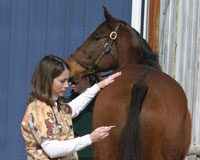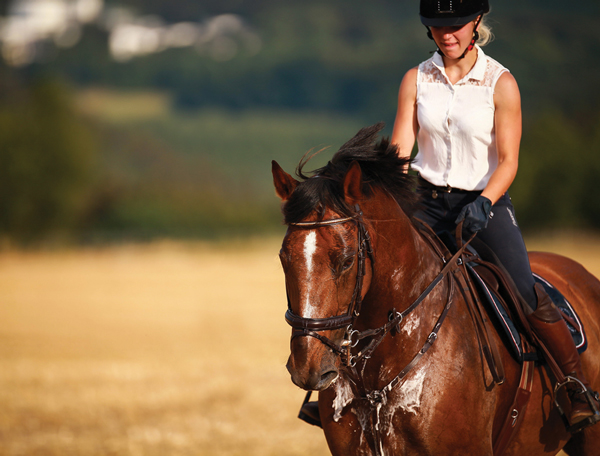
While many equestrians welcome the summer with open arms (more riding!), there are a few downsides to the season from your horse’s point of view. At the top of the list of your horse’s warm-weather woes are likely two items: flies and heat. Here’s how to conquer the heat and keep your horse bug-free as part of your summer horse health care during some of the year’s best riding time.
Beat the Heat
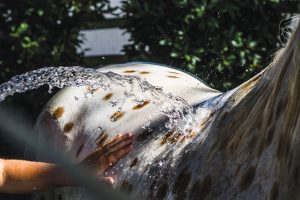
First, make sure your horse is fit enough for the exercise you’re asking of him in the heat. Consistent conditioning is key; also, remember to give the ambient environment its due. Humidity, in particular, can take a lot out of your horse, just like it can do to you. As the mercury rises, take frequent breaks to let your horse catch his breath and cool down a bit.
When battling the summer heat, also keep in mind your horse’s overall age and health status. Younger horses that are mentally “hot” may unknowingly push themselves. Older horses with Cushing’s disease may have excessive hair that should be clipped to offer extra heat relief.
Strategically timing your rides can also be a big help. If possible, aim for early morning or late evening to stay out of the sun’s glare, or ride at a time of day when the ring is in the shade.
On really stifling days, sometimes the best bet is simply not to ride. A general rule of thumb is to not ride when the temperature (in degrees Fahrenheit) and humidity percentage added together are more than 150. This goes for avoiding trailering, too.
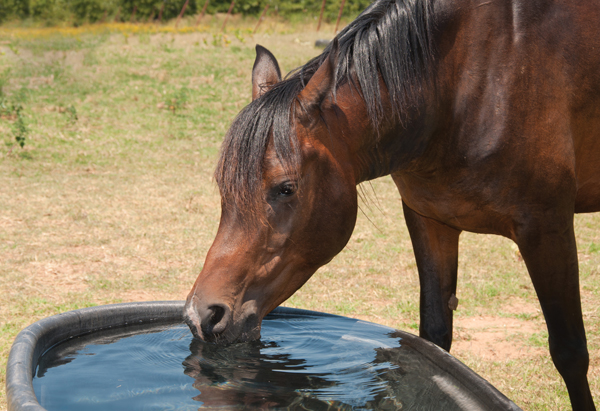
Hydration and Cooling Down
Next, a word about water. The old saying that warns against letting a hot horse drink cold water is dangerously incorrect. Never limit a horse’s water access. Allow a horse to drink as much as he needs, especially in hot weather, because he will modulate his own demands.
In addition to having water accessible, don’t forget to always have salt available. Blocks are great, as horses can regulate their intake based on their individual needs.
One thing you should avoid, however, is putting a horse still hot from exercise directly into his stall. Cooling down a hot horse takes time but is important for the sake of avoiding potential cramping and colic-like signs. Learning to measure your horse’s pulse is a good objective way to assess cool-down time.
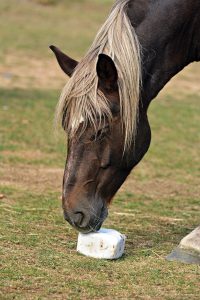
When finished with a ride, walk your horse out at an easy pace until he’s back to just above or at his resting heart rate. On an average adult horse, resting heart rates hover around 40 beats per minute. If he’s seriously sweaty, walk more until the horse is measurably drier.
Hosing off is of considerable help to a horse on a hot day, but using a sweat scraper is important in the drying process. Horses, like us, cool via the evaporative effects of water. Merely allowing a horse to stand soaked is far less efficient than a slightly damp horse.
Water on a soaked horse can act as an insulator instead of a coolant, as the water embedded in the coat quickly warms up to the horse’s own body temperature. Because of this, it’s crucial to remove excess water off your horse’s body so that evaporation can occur. Fans can help with this, too.
Fight the Flies
The inconvenience that excessive summer heat sometimes places on riding and horse health care can be compounded by the seasonal annoyance of flies. House flies, stable flies, horse flies, deer flies, horn flies—there are several types out there that transmit disease, give painful bites, and cause a general sense of irritation (to humans and horses alike).
Thankfully, there are some tried-and-true methods that, especially when incorporated together, can make a significant difference in lowering the fly count at the barn.
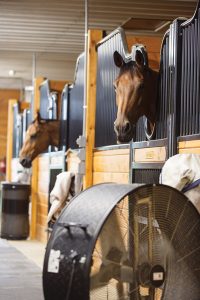
◆ FANS: One of the main tenets of flying insects is that a fly that can’t land can’t bite. Rigging up some fans in the barn is one of the easiest and most direct methods to reduce flies in the immediate area.
Have the fans blowing as much as possible, and keep in mind they don’t have to be set to jet-power to be effective. Just a little wind turbulence is enough to prevent flies from landing.
◆ MANAGE MANURE: Manure management also helps reduce flies in the immediate area because some fly species use manure as a location to lay eggs. Effective manure management should be fairly aggressive and consistent.
This means removing manure piles from the stall at least once daily, if not more frequently depending on how much your horse is stalled. This also applies to small paddocks. If possible, keep the manure pile as far away from the immediate barn as possible.
◆ ELIMINATE MOISTURE: Another barn management practice that helps shrink the overall fly burden is reducing moisture around the barn. This means keeping stalls clean and dry, eliminating standing water around the barn and gates, and removing old tires or other idle barn equipment that traps standing water. This aids in mosquito control, too—an added bonus.
◆ SEAL OFF FEED: Keeping feed bins tightly closed and garbage covered and frequently removed from the barn will also discourage flies (and other larger pests like rodents and opossums) from hanging around.
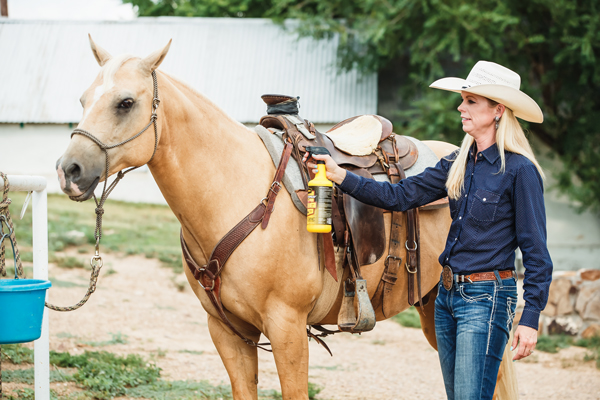
◆ FLY-KILLERS: Other whole-barn management options, like fly predators, baits, or fly tapes and traps can also help. However, keep in mind their effectiveness varies widely on various aspects that may be out of your control, including the size of the barn and stocking density.
◆ FLY REPELLENT: For fly management for your individual horse, the fly spray bottle is a ubiquitous weapon as part of your summer horse health care. But, as with all management aspects, even fly repellent sprays and spot-on treatments should be used in conjunction with other methods to be most effective.
Read the ingredients and instructions, as various chemicals may have different repellent properties, depending on the insect species. Sprays touted as “natural” may have more limited efficacy and require more frequent application.
That said, the overall frequency of any fly spray application is critical to its success. At a minimum, most sprays should be applied at the start and end of each day, but it’s also good practice to spray down your horse prior to rides and after, especially if your horse is sweaty or you’ve hosed him off.
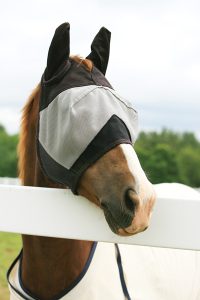
◆ PHYSICAL BARRIERS: A physical barrier is sometimes one of the only options for fly relief. Fly sheets can be particularly useful for horses with very sensitive skin, and fly masks offer immediate relief around your horse’s eyes.
However, most fly sheets don’t prevent flies from biting the belly of the horse. For this reason, fly sprays used in conjunction with sheets may be most effective.
◆ FEED-THROUGH FLY CONTROL: This method uses a special feed additive that, when consumed, passes through the horse unabsorbed but alters the manure chemically.
If fly eggs are laid in it, they will not mature.
This method of fly control takes a few weeks to see results; for this reason, horse owners are advised to start feed-through fly control in the spring. Owners at large boarding stables should realize feed-through fly control will only have a noticeable impact if most or all of the horses at the barn are taking it.
For both heat and fly management, the best method is a multi-pronged approach built to accommodate your specific horse’s needs and environment. Small changes can collectively make large strides in helping your horse have a more comfortable summer season.
This article about summer horse health care strategies appeared in the July 2020 issue of Horse Illustrated magazine. Click here to subscribe!




